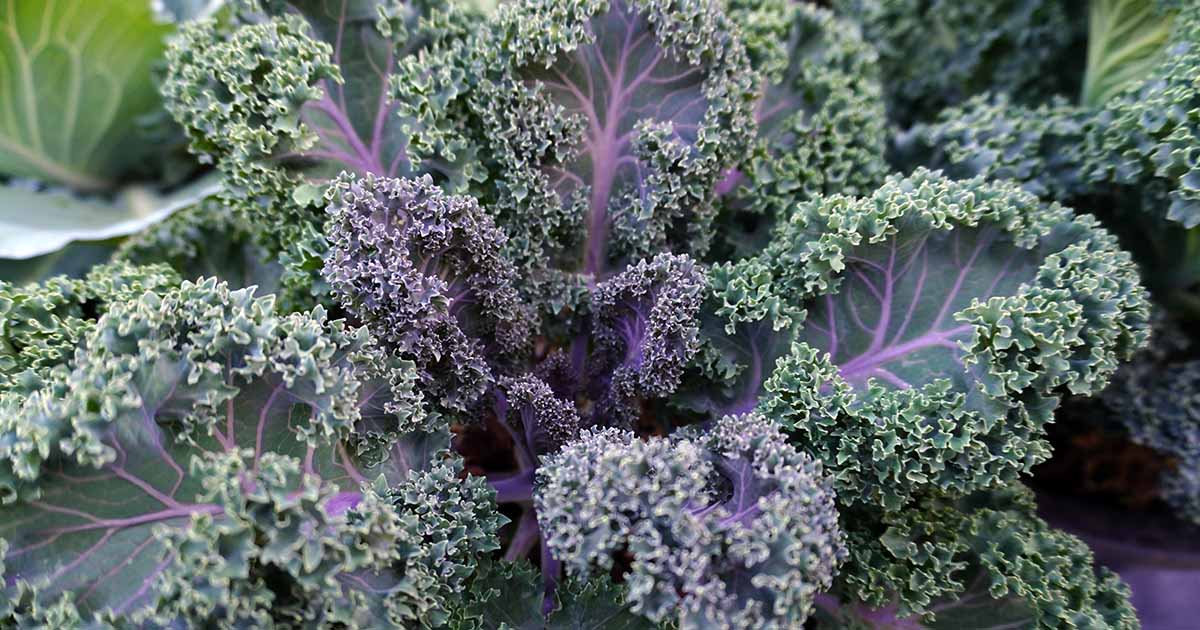Watering
Water regularly, providing one inch of water per week in the absence of rain. Strive to keep the soil moist but not wet for the most abundant growth.


Avoid splashing water onto the lower leaves, which can allow unfriendly fungal pathogens to proliferate and lead to powdery mildew. Drip or soaker hose irrigation systems are ideal.
Fertilizing
Overwintered plants benefit from an early topdressing of compost, manure, or worm castings.
Carefully work in one or two inches of organic matter over the root zone in early spring once new growth starts to pick up.
Spring plantings can be fed with a slow release fertilizer using a balanced formula or one slightly higher in nitrogen.


Down to Earth Bio-Fish
Down to Earth Bio-Fish, available at Arbico Organics, has an NPK ratio of 7-7-2 that’s ideal for leafy greens.
Alternatively you can feed with a liquid or water-soluble formula once a month.
Maintenance
To help keep the soil moist, roots cool, and weeds at bay, apply a two-inch layer of mulch of shredded bark, leafmold, or straw when plants are at least six inches tall.


Remember to keep mulch materials away from the base of the plant to avoid stem rot.
If you’ve found a variety that you love and grows well in your garden, you can easily save the seeds for future crops.
Follow the steps in our guide to harvesting and storing kale seeds – it has all the details you need!
Cultivars to Select
Here’s a small sampling of popular varieties from the three main kale groups.
For more ideas, check out the delicious recommendations in our roundup of 13 of the best kale varieties!
Black Magic
A spell-binding plant with long, dark, and wonderfully pebbled, strappy leaves, ‘Black Magic’ is a gourmet Tuscan variety with exceptional sweetness and rich flavors.
The savoy-style leaves start out gray green and as they mature into darkly dramatic fronds, the colors deepen into an inky forest green so dark it’s almost black.


‘Black Magic’
‘Black Magic’ is frost tolerant and grows 24 to 36 inches tall with a spread of 18 to 24 inches. Begin harvesting in 65 days.
You can find packets of seeds available at Burpee and from Eden Brothers.
Dwarf Blue Curled
Vates ‘Dwarf Blue’ is a miniature curly variety with upright stems heavily laden in lush, blue green leaves with densely ruffled margins.
Vates types are both cold and heat tolerant and slow to bolt, maturing in 55 days on plants that grow 12 to 16 inches tall and spread up to 12 inches.


‘Dwarf Blue’
An excellent choice for containers and kitchen gardens – and the dense, compact plants are so pretty they make an attractive and edible border plant as well.
Seed packets are available at Burpee and the larger ‘Blue Scotch’ curly variety can be found at True Leaf Market.
Red Russian
A flat leaf variety, ‘Red Russian’ has oak-like, heavily toothed leaves of gray green on upright burgundy stems that easily withstand hard frosts.
The flavorful, tender leaves sweeten with cold weather and darken to burgundy, plum, and purple as the temperatures drop.


‘Red Russian’
Plants grow 24 to 36 inches tall and wide and mature in 50 to 60 days.
You can find packets of seeds available at Burpee and from True Leaf Market.
And we have a guide to growing ‘Red Russian’ if you’d like to learn more.
Managing Pests and Disease
Although kale is easily cultivated, hearty, and fast growing, it is susceptible to a number of pests.
Diseases such as damping off, downy mildew, and black rot plus marauding insects like aphids, cabbage white moths, and flea beetles are common problems.
To control nasty pathogens, keep the soil lightly moist but not wet, space plants for adequate air circulation, and always use heat-treated seeds.


To keep most bugs at bay, natural pesticides like neem oil can be sprayed onto infested plants, but I find the easiest solution for keeping hungry insects away is to use floating row covers.
Our guide to common kale pests and diseases has more information.
Harvesting
For baby greens, tender leaves can be picked as early as 30 days from sowing. Full-sized leaves are generally ready in 50 to 65 days, depending on the variety.
To harvest young leaves, treat plants as a cut-and-come-again crop.
Pick them when they’re at least four inches in length, removing only the outer ones and leaving the terminal buds – new leaves develop from the terminal, or main stem.

